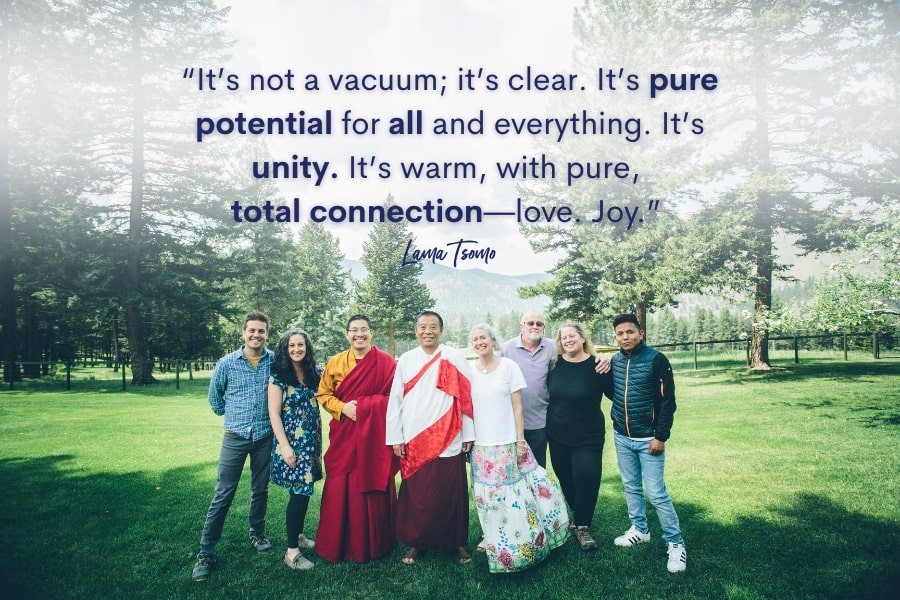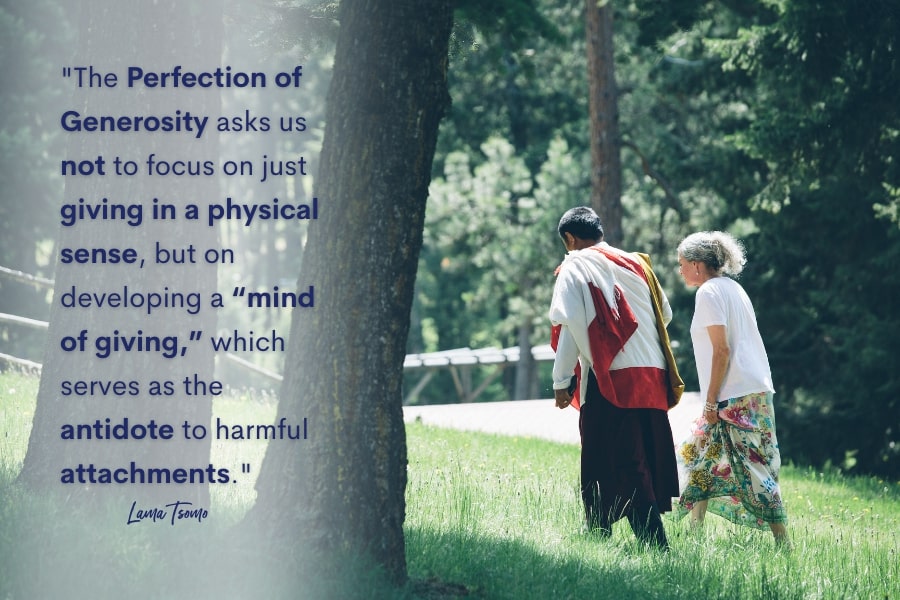Self-care can be as simple as pausing to reflect on gratitude. Here’s a compilation of some of our favorite teachings that help us cultivate gratitude and compassion.
Before we go into the teachings, we want to share the benefits of a gratitude practice.
According to this healthline.com article, some benefits may include:
- An overall sense of well-being.
- Improved mood and increased positive feelings.
- Improved and strengthened relationships.
- Increased optimism.
How to Practice Self-Care with Gratitude
It’s important to know that a gratitude practice can look different for everyone. You don’t have to buy a gratitude journal. It could mean taking a few minutes out of your day to jot down a couple of things you appreciate about your life or your surroundings. It could mean making it a point to express gratitude to your loved ones for all the ways they enrich your life. Or it could mean taking to your meditation cushions to cultivate those feelings within yourself. It can be easy for a gratitude practice to feel like another item you need to check off your to-do list in the morning, but most important is that these practices should fill your cup — not deplete it! And that’s why we want to give you a few different tools to figure out what works for you.
Using Shamata to Ground Yourself in the Present
Genuinely practicing gratitude requires mindfulness. Often, when you have difficulty feeling or practicing gratitude, that’s a sign that you are preoccupied with thoughts about the difficulties of the past or a future that you’d like to create. Mindfulness is as simple as being aware of your thoughts and feelings. When you ground yourself in where you are right now — in your body, in your breath — then you can start to really look around and notice what you are grateful for. Whether you are an experienced meditator or a beginner, try starting with Shamata or Calm Abiding meditation. You might be surprised by how much it can help to stop and say, “I am here.”
Learn more about this practice from Lama Tsomo and join a Calm Abiding meditation, and click here to listen to this enlightening podcast episode on Lion’s Roar.
Using Meditation to Understand Impermanence
It can be scary to think about the fact that nothing in this world is permanent. But it can also be one of the most effective ways to expand your capacity for gratitude. Once you detach yourself from everything that you identify as “yourself,” once you let go of all that isn’t “you,” you leave yourself with vast, universal awareness.
Below, you can find a practice called “Looking At the Thinker,” which allows you to practice just that. You can read more about it here in this excerpt of Deepening Wisdom, Deepening Connection, featured in Tricycle Magazine.

“Looking at the Thinker”
I begin by imagining I’m lying in a bed, no longer able to walk. I can’t even go to the bathroom.
So the ‘me’ that is active, nimble, and rather athletic is gone.
Who/what am I? What’s left?
Now I can’t even lift my hands to grab the water glass or even gesture.
What’s left?
Now my senses of smell, taste, sight, and hearing become dim.
What’s left?
There go all those years of learning Tibetan. Who/what am I?
What’s left?
My skills as a psychotherapist, gone.
What’s left?
The piano lessons, singing.
What’s left?
My tendency to get lost even with the best of directions.
What’s left?
I see those and thousands of other ‘me’ things all floating away.
What’s left?
The personality I identified as ‘I’: Is any of that left? It’s my history and mental tendencies.
Those leave, too.
What’s left?
Even English.
Even being an American.
And even my name.
Gone.
What’s left?
Perhaps it’s my awareness. Just that—my awareness.
But what’s this ‘my’? What container or boundary is there around this awareness?
I look, but I can’t find one.
There’s just awareness. Vast, universal awareness.
It’s not a vacuum, it’s clear. It’s pure potential for all and everything. It’s unity. It’s warm, with pure, total connection—love. Joy.”
— Lama Tsomo, Deepening Wisdom, Deepening Connection
Cultivating Generosity and Compassion
Once you have filled your cup through these practices, you can then give back to your family, friends, and communities. One of the best ways to appreciate what you have is to be able to give back to others. That’s where generosity comes in, which is one of the mental states of giving up something to which we are attached.
“One of the six perfections, or six paramitas, that ancient Tibetan Buddhism teaches, the perfection of generosity asks us not to focus on just giving in a physical sense, but on developing a “mind of giving,” which serves as the antidote to harmful attachments—a.k.a. the things that often hinder us from better understanding ourselves and connecting with others.”
— Lama Tsomo, Tricycle Magazine

Practicing What We Preach
Of course, we want to end by taking a moment to practice gratitude ourselves. At Namchak, our community is our crown jewel — and we want to thank you (yes, you!) for taking the time to read this post, engage in Learning Circles and courses, share your thoughts and resources, and make this community a safe and compassionate space for meditators of all backgrounds.
We appreciate you! Interested in learning more about Buddhism, meditation, or getting involved in our community? Learn more about our upcoming events and programs.
